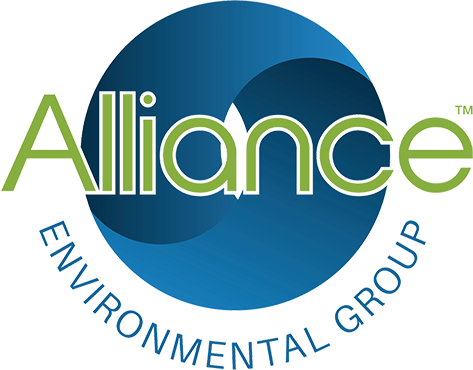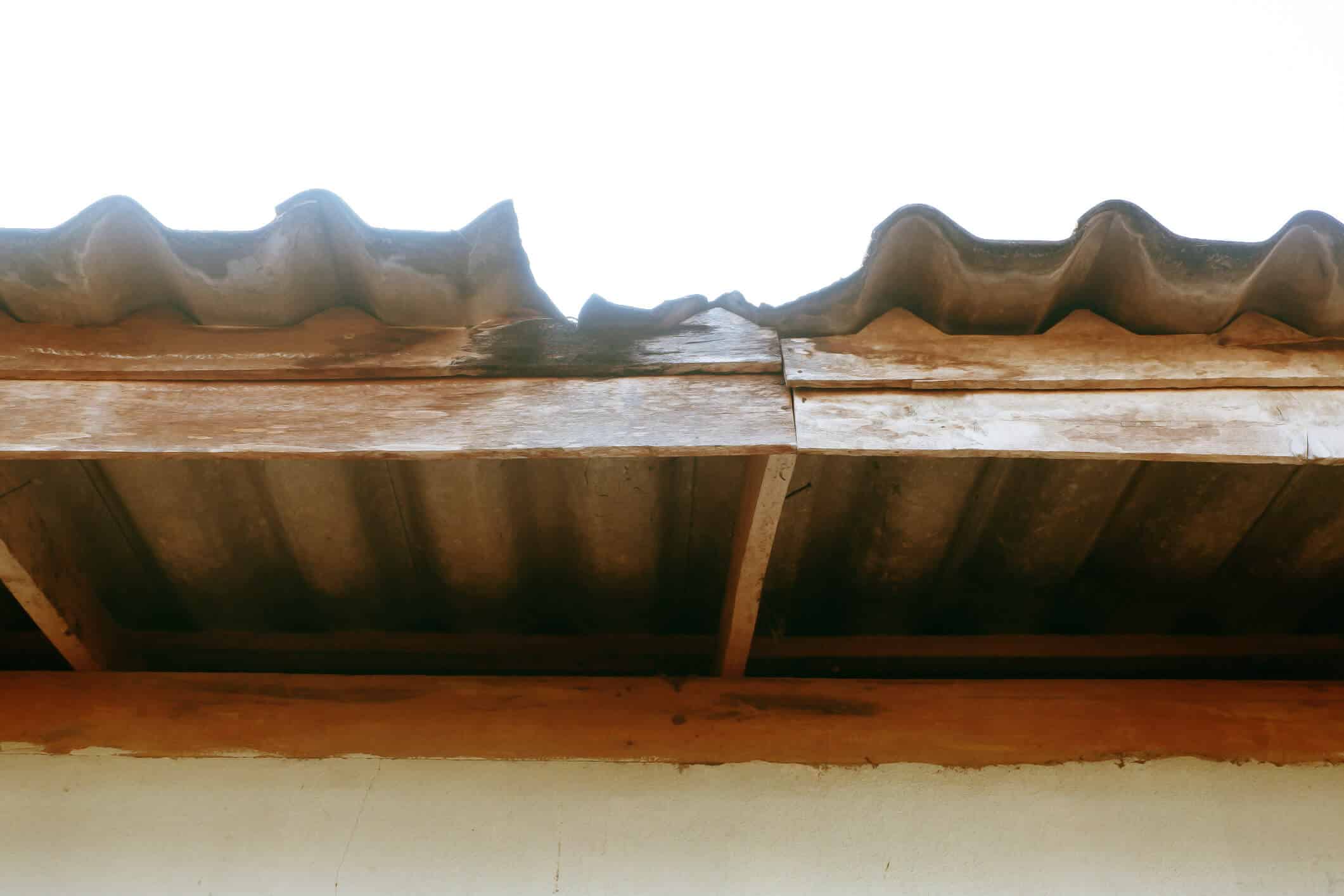When asbestos-containing materials are discovered in your commercial facility, the immediate concern often centers on one critical question: what’s the safest, most cost-effective way to address this hazard?
As a property manager or facility director, you’re tasked with protecting tenants and staff while maintaining compliance with safety regulations—all while managing operational continuity and budget constraints.
The discovery of asbestos doesn’t have to trigger panic, but it does require informed decision-making. Two primary approaches dominate professional asbestos management: complete removal (abatement) and protective coating (encapsulation). Each method offers distinct advantages and limitations that directly impact your facility’s safety profile, operational costs, and long-term maintenance requirements.
This comprehensive comparison will clarify the fundamental differences between these approaches, helping you evaluate which option aligns with your facility’s specific needs, compliance obligations, and risk management priorities. By understanding these methods thoroughly, you’ll be better positioned to engage qualified asbestos abatement companies near me and make decisions that protect your organization’s interests.
What Is Asbestos Abatement?
Asbestos abatement refers to the complete removal of asbestos-containing materials from a building or structure. This process involves systematically identifying, containing, and physically extracting all materials that contain asbestos fibers, followed by proper disposal according to environmental regulations.
Professional asbestos abatement companies typically employ several removal methods depending on the material type and location. Wet removal techniques use specialized solutions to minimize fiber release during extraction, while dry removal methods incorporate advanced containment systems and negative air pressure to prevent contamination. The process always includes comprehensive site preparation, with plastic barriers, HEPA filtration systems, and protective equipment ensuring worker and occupant safety.
The abatement process generally follows a structured protocol: initial assessment and testing, containment area establishment, material removal using appropriate techniques, thorough cleanup with HEPA filtration, air quality testing, and final clearance certification. This systematic approach ensures complete elimination of asbestos hazards while maintaining strict safety standards throughout the project.
Abatement represents the most definitive solution for asbestos management, permanently eliminating the source of potential fiber release. Once completed successfully, property owners gain peace of mind knowing the hazard has been completely addressed, reducing long-term liability concerns and eliminating ongoing monitoring requirements.
What Is Asbestos Encapsulation?
Asbestos encapsulation involves applying specialized sealant materials to asbestos-containing surfaces, creating a protective barrier that prevents fiber release into the indoor environment. Rather than removing the hazardous material, this method essentially locks the asbestos in place, rendering it harmless as long as the encapsulant remains intact and effective.
Two primary encapsulation methods are commonly employed by professional service providers. Penetrating encapsulants soak into the asbestos material, binding fibers together from within the substrate. Bridging encapsulants create a surface membrane that covers and seals the material, forming a protective coating that prevents fiber release.
The encapsulation process requires careful surface preparation, including cleaning and minor repairs to ensure proper adhesion. Qualified technicians then apply the encapsulant using spray equipment or brush methods, depending on the specific product and surface conditions. Multiple coats may be necessary to achieve adequate thickness and protection levels.
This approach offers several practical advantages, particularly in situations where removal would be extremely disruptive or technically challenging. Encapsulation typically requires less time to complete than abatement, resulting in reduced operational disruption for building occupants. The method also generates significantly less waste material, simplifying disposal logistics and reducing project costs.
Comparing the Two Options
Safety and Compliance Considerations
Both abatement and encapsulation can effectively address asbestos hazards when properly executed by qualified professionals. However, their safety profiles differ in important ways that impact long-term risk management strategies.
Abatement permanently eliminates the asbestos source, providing the highest level of long-term safety assurance. Once removal is complete and clearance testing confirms successful remediation, the risk of future asbestos exposure is essentially eliminated. This definitive approach aligns well with organizations prioritizing comprehensive risk elimination over cost considerations.
Encapsulation provides effective short-term protection but requires ongoing maintenance and monitoring to ensure continued effectiveness. The encapsulant material can deteriorate over time due to building vibrations, temperature fluctuations, or physical damage, potentially compromising the protective barrier. Regular inspections become necessary to verify the integrity of the encapsulation system.
From a compliance perspective, both methods meet current regulatory requirements when performed according to established standards. However, some organizations prefer abatement for its finality, eliminating future compliance concerns related to asbestos management programs and periodic reinspection requirements.
Cost and Operational Impacts
Initial project costs typically favor encapsulation, which generally requires lower upfront investment compared to complete abatement. The encapsulation process involves fewer labor hours, generates less waste disposal expense, and often permits faster project completion with reduced operational disruption.
Abatement projects involve higher immediate costs due to extensive containment requirements, specialized removal techniques, increased labor demands, and substantial waste disposal fees. These projects also typically require longer completion timelines, potentially impacting building operations and tenant satisfaction more significantly.
However, total cost of ownership calculations must consider long-term factors beyond initial project expenses. Encapsulation requires periodic maintenance, regular inspections, and potential reapplication of encapsulant materials over time. These ongoing costs can accumulate significantly over the building’s operational lifespan.
Abatement eliminates future asbestos-related maintenance costs and monitoring requirements, providing predictable long-term expense management. For buildings with extended operational horizons, this approach often proves more economical despite higher upfront investment.
Longevity and Maintenance Needs
The durability characteristics of each approach significantly impact long-term facility management requirements and budget planning considerations.
Properly executed abatement provides permanent resolution with no ongoing asbestos-related maintenance requirements. Once clearance testing confirms successful removal, facility managers can focus resources on other operational priorities without dedicating budget or attention to asbestos monitoring programs.
Encapsulation systems typically maintain effectiveness for 10-20 years under normal conditions, though this timeframe varies based on environmental factors, building usage patterns, and encapsulant product quality. Regular visual inspections and periodic professional assessments become necessary to verify system integrity and identify potential maintenance needs.
Environmental factors such as humidity, temperature fluctuations, building vibrations, and occupant activities can impact encapsulation longevity. Buildings with high-traffic areas, industrial operations, or significant mechanical systems may experience accelerated encapsulant deterioration, requiring more frequent maintenance interventions.
Factors to Consider in Decision-Making
Building Use and Occupancy
The intended use and occupancy patterns of your facility play crucial roles in determining the most appropriate asbestos management approach. High-traffic commercial spaces, educational facilities, or buildings housing sensitive populations may benefit from the permanent solution provided by complete abatement.
Buildings scheduled for major renovations, structural modifications, or tenant improvements often require abatement regardless of initial preferences, as construction activities can disturb encapsulated materials and compromise their effectiveness. Planning for future building modifications should factor into your current decision-making process.
Facilities with stable, long-term occupancy and minimal anticipated changes may find encapsulation provides adequate protection while preserving budget resources for other operational priorities. However, buildings with frequent tenant turnover or evolving space requirements may benefit from the finality of abatement.
Compliance and Liability Risk
Regulatory compliance requirements vary by jurisdiction and building type, but both abatement and encapsulation can meet current safety standards when properly implemented. However, your organization’s risk tolerance and liability management strategy should influence this decision significantly.
Abatement provides the strongest defense against potential liability claims, as it permanently eliminates the hazard source. This approach may be particularly valuable for organizations in litigation-sensitive industries or those prioritizing comprehensive risk elimination strategies.
Encapsulation maintains ongoing compliance obligations, including regular monitoring, maintenance documentation, and potential disclosure requirements to building occupants. These administrative burdens may strain facility management resources and create additional liability exposure if not properly maintained.
Vendor Qualifications
Regardless of which approach you select, partnering with qualified, experienced asbestos abatement companies near me is essential for project success and regulatory compliance. Proper licensing, insurance coverage, and demonstrated expertise in your chosen methodology are non-negotiable requirements.
Reputable asbestos abatement company providers should offer comprehensive services including initial assessment, project planning, execution, and post-completion documentation. They should also provide clear explanations of their recommended approach based on your facility’s specific conditions and requirements.
Request detailed proposals that outline project scope, timeline, safety protocols, and quality assurance measures. Compare vendors based on their experience with similar facilities, regulatory compliance records, and ability to minimize operational disruption during project execution.
Making the Choice
The choice between asbestos abatement and encapsulation depends on multiple factors specific to your facility and organizational priorities. Abatement offers permanent resolution with higher upfront costs, while encapsulation provides effective short-term protection with ongoing maintenance requirements.
Consider your building’s long-term operational plans, risk tolerance, budget constraints, and compliance obligations when making this decision. Remember that the lowest initial cost may not represent the best long-term value when factoring in maintenance, monitoring, and potential future remediation needs.
Most importantly, engage qualified professionals early in your decision-making process. Experienced asbestos abatement companies near me can assess your specific situation and provide tailored recommendations based on your facility’s unique conditions and requirements.
Frequently Asked Questions
How do I know if my facility needs abatement or encapsulation?
The decision depends on factors including building age, planned renovations, occupancy type, budget considerations, and risk tolerance. A professional assessment by qualified asbestos abatement companies can evaluate your specific situation and provide tailored recommendations based on material condition, location, and facility requirements.
What factors influence the cost of asbestos management projects?
Project costs vary based on material type and quantity, accessibility, containment requirements, disposal fees, labor complexity, and chosen methodology. Additional factors include building occupancy during work, required air monitoring, and post-project testing. Professional vendors can provide detailed cost breakdowns based on site-specific assessments.
How does choosing encapsulation vs. abatement affect long-term maintenance budgets?
Encapsulation requires ongoing inspection and maintenance costs that can accumulate significantly over time, including periodic professional assessments, potential reapplication, and administrative overhead for compliance documentation. Abatement eliminates these future expenses, providing predictable long-term budget planning despite higher initial investment.
What role does tenant communication play in asbestos management decisions?
Transparent communication helps maintain tenant confidence and may influence methodology selection. Some tenants prefer the finality of abatement for peace of mind, while others prioritize minimal operational disruption. Consider tenant sensitivity, lease obligations, and disclosure requirements when developing your communication strategy and project timeline.




